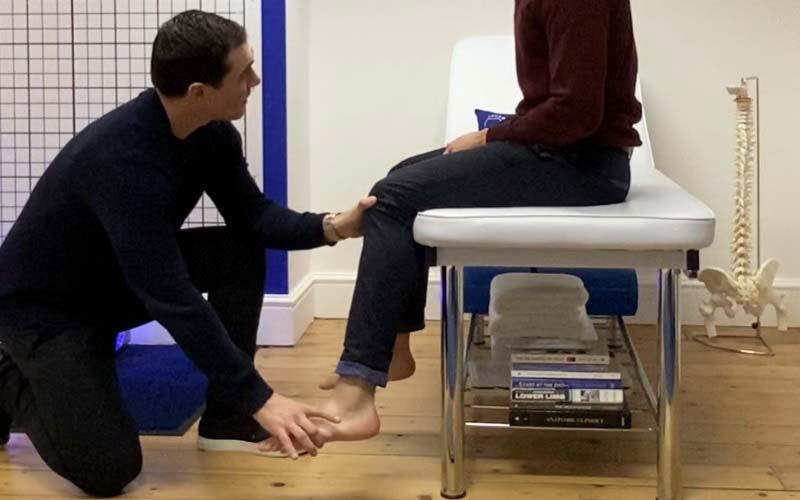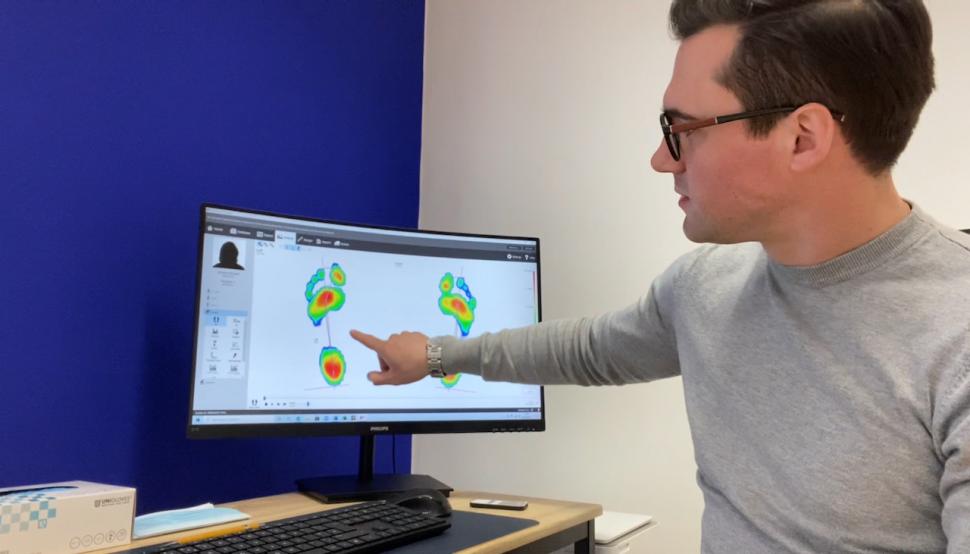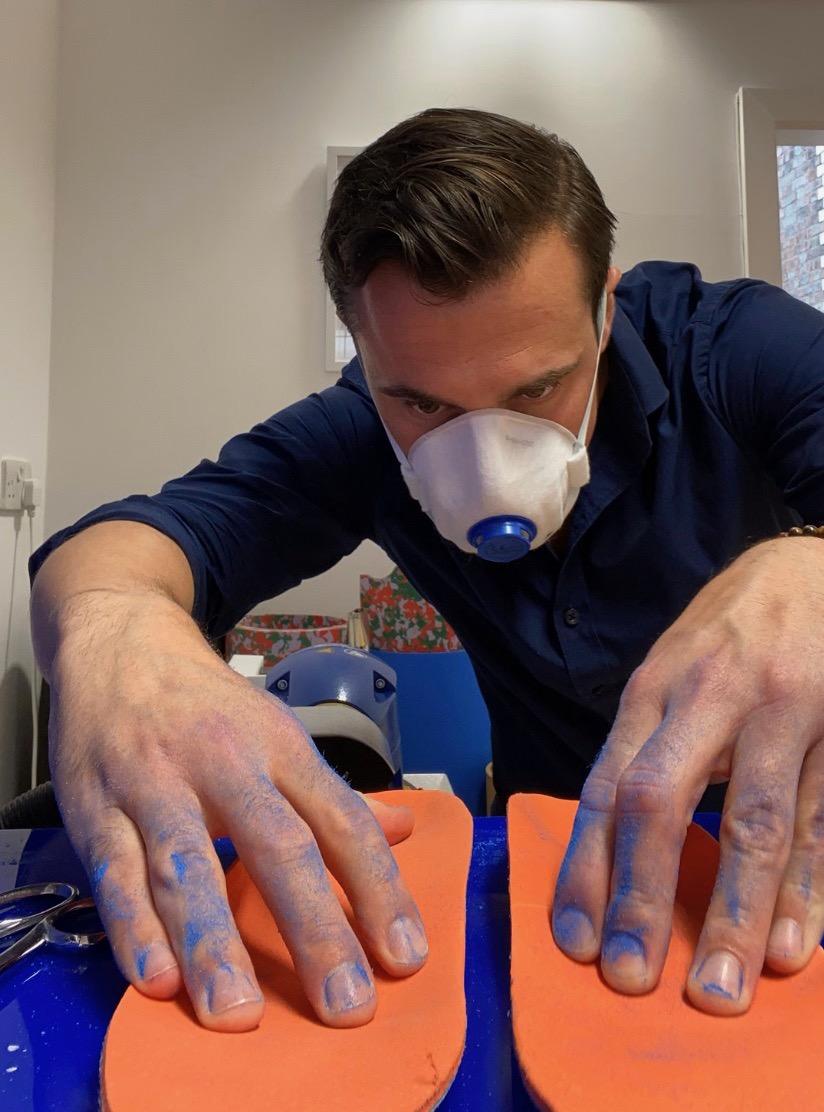- News
- Reviews
- Bikes
- Components
- Bar tape & grips
- Bottom brackets
- Brake & gear cables
- Brake & STI levers
- Brake pads & spares
- Brakes
- Cassettes & freewheels
- Chains
- Chainsets & chainrings
- Derailleurs - front
- Derailleurs - rear
- Forks
- Gear levers & shifters
- Groupsets
- Handlebars & extensions
- Headsets
- Hubs
- Inner tubes
- Pedals
- Quick releases & skewers
- Saddles
- Seatposts
- Stems
- Wheels
- Tyres
- Tubeless valves
- Accessories
- Accessories - misc
- Computer mounts
- Bags
- Bar ends
- Bike bags & cases
- Bottle cages
- Bottles
- Cameras
- Car racks
- Child seats
- Computers
- Glasses
- GPS units
- Helmets
- Lights - front
- Lights - rear
- Lights - sets
- Locks
- Mirrors
- Mudguards
- Racks
- Pumps & CO2 inflators
- Puncture kits
- Reflectives
- Smart watches
- Stands and racks
- Trailers
- Clothing
- Health, fitness and nutrition
- Tools and workshop
- Miscellaneous
- Buyers Guides
- Features
- Forum
- Recommends
- Podcast
feature
 Podiatry
PodiatryHow a gait analysis can improve your cycling performance
Every time non-cyclist patients notice the jerseys on the clinic walls, they ask me how cyclists can benefit from orthotics since they don’t land on their feet when cycling. They ask how an arch support can help them when only the toes are locked onto the pedal. The truth is orthotics and arch supports can make a huge difference to your cycling performance.
Whether you cycle on- or off-road, just for fun or to break records, you’ve got to look at your body and its biomechanics as much as your bike and its mechanics if you want to improve your performances.
I work with many race-winning, pro-cyclists including British racing cyclist Dan Bigham, expert in cycling aerodynamics and a performance engineer for Ineos; Harvey Leadbeater, cycling and nutrition coach, founder of the Healthy Living Fitness Race Team, and author of #HealthyLivingKitchen; Tao Geoghegan Hart who won the 2020 Giro d'Italia; and pro road cyclist Harry Tanfield.
All understand the benefits of getting it right from the feet upwards. Think about it, how many times are you going to reproduce the same movement? The only way to improve your performance on a bike is to perfect that movement.
At the same time, repeating over and over the same ‘bad’ movement will reduce your enjoyment and your performance, as well as make you prone to injury by creating an imbalance. This can lead to joint impingements associated with extra wear and tear which can manifest as a pain for now and turn into osteoarthritis later on. In addition, muscle imbalances result in the ‘overworking muscles’ fatiguing, leading to pain and injuries, and the ‘underworking muscles’ having a slowed reaction time which exposes a joint to sprains and strains.
Riding your bike should help you build a strong body, it should not damage any of your joints. Muscles might be sore after exercising, and this isn’t necessarily a bad thing, as long as you listen to the pain, understand what caused it, and address it.
"The biomechanics of a rider is often overlooked in the modern cycling world of watts, aerodynamic drag and marginal gains, which is quite surprising once you start to understand the true influence biomechanics have on performance,” explains cycling pro Dan Bigham.
“When it comes to riding quickly, the ratio that matters is the input power divided by drag power, often called the power-to-drag ratio. To go faster you can either put more power in or reduce your drag losses. It’s quite simple when you think about it. Which side of the equation you work on doesn’t actually matter as the end result is the same if you increase your input power by 10W or reduce your drag losses by 10W.
“It is easy to purchase equipment improvements nowadays, but for long-term improvements it pays to invest in your physiology and therefore your biomechanics. For the input power side of the equation to improve you need an efficient base that enables you to consistently complete your training without injury or issue, as well as produce sustained maximal power in your race position.
> Strength training for cyclists: 7 exercises to boost your climbing power
“Your feet are the most loaded contact points, dealing with forces and torques at a range of magnitudes and directions. They need to be well supported and able to provide a stable base for your body to work from, which is why I believe having an insole that is tailored to your exact needs and requirements is a key starting point for any ambitious athlete."
Let’s take a look at how the body works in relation to your feet to help understand why so much is influenced by them.
Your body compensates
Your only foundation is your two feet, and each foot is different, but despite the imbalance this difference can make, our eyes are always levelled.
In other words, what happens in between your feet and your eyes, on every joint (ankle, knee, hip, back and neck) and in any body plan (frontal, transversal and sagittal) is a natural adaptation or compensation, all designed to keep the eyes level regardless of what is happening below. This compensation can only be addressed when your feet are assessed independently.
Both static and dynamic assessments help highlight the rider’s asymmetry. But to me, the barefoot gait analysis is the best way to observe the adaptations and compensations associated with each asymmetrical point.
> Are shorter cranks better on your bike? Find out why bike fit experts recommend going shorter
Some factors are structural and can’t be changed without surgery, but we can still adapt to them and improve the balance with custom orthotics. Other factors are purely postural and can be addressed with custom orthotics and physical therapy.
“In the second case it can be good to get an osteopath, physiotherapist, or PT on board, making sure that once the alignment is perfected, the muscle imbalance is also addressed. But the joint alignment comes first, because the bone position tells the muscles what to do, not the other way around."
To assess the joint alignment, we need to look at the swinging belts of the pelvis and shoulders.
The swinging belts
The alternated swing between the pelvic belt and the shoulder belt is easier to observe when walking than when cycling. Although the swing exists in both cases, despite having two hands on the bar when cycling, it is not as obvious to see when cycling, so a barefoot walking gait analysis is recommended. We can often guess at the asymmetry if the rider frequently experiences a burning sensation behind one shoulder blade but it will be just that: a guess.
A barefoot gait analysis will give us the exact and correct information we need to create custom orthotics for each foot that will address the imbalance in the swings, and improve the balance of power in both feet.
To do this correctly and to ensure the orthotics are custom made for each foot, you’ll need professional help.
Seek assistance
Getting external expert help can make a huge difference to your performance, whether it is your cycling technique, your mental resilience, the mechanics of your bike, or the biomechanics of your body. An expert can see the big picture and will notice the smallest details.
Studying and understanding your biomechanics requires a trained eye and the right equipment, so seeking professional, expert help is a must.
To get started we need to put the bike aside when analysing the rider. I believe if both are well set up, the rider will then build a better relationship with the machine through his/her training.
Therefore, look for a podiatrist with biomechanics expertise, and one who has knowledge of cycling or has worked with cyclists previously. Each sport is slightly different, so it is best to work with an expert who knows your sport and the pressures it can put on your body.
Although a bike comes out of a factory pretty much symmetrical, we are all born with a certain degree of asymmetry. We’ve got a dominant leg, our bodies might have recorded some injuries here and there, cycling related or not, and all those small details make us who we are and define the limitations we must acknowledge when chasing victories. So, each rider’s body is unique and needs to be treated as such.
> Cycling fitness: How to get the most from your indoor training sessions
"Prevention is better than cure,” says Dan Bigham. “And it often takes an injury for a rider to truly appreciate this. When we think about it, a pedalling leg is a multi-bar mechanism with each joint having six degrees of freedom (three translational and three rotational, albeit only a small amount in some planes). The only interventions we can have are at the top of the mechanism with the saddle (type, position, angle, softness etc.) or at the bottom of the mechanism with the pedal, cleat, shoe and ultimately the insole.
“Small issues quickly grow over time and can soon be debilitating. Having been on the receiving end of these rapidly growing issues, it isn’t enjoyable, it can wreck blocks of training and racing, or even an entire season. I think in this area the old adage of ‘a stitch in time saves nine’ couldn’t be more true. Address those little question marks before they become big full stops to your cycling."
How symmetrical should things be?
A barefoot gait analysis can show how the whole body or each big joint adapts to compensate for your imbalanced movement. It can also show the muscle imbalances and joint impingements which are part of your life, on and off the bike, and must be acknowledged when repeating the same movement over and over.
Anytime a pain emerges or develops on the bike, for example, when experiencing a right knee pain, a left groin pain, or feeling your right forefoot on fire, it is easier to blame the bike which you can inspect and then change its settings, rather than looking at your own body, biomechanics and establish a treatment plan.
> 10 best high-performance road cycling shoes 2022 - get faster with light, stiff shoes
Next time you think about making your symmetrical engine asymmetric to address your one side issue, ask yourself how you could bring some symmetry in your asymmetrical body instead. Have a pro look at your gait and discuss your medical history, past injuries, and bad habits to collect and connect valuable information you could then use to make your body work better and improve your performances on the bike.
However, reaching a place of symmetry in your biomechanics does not guarantee symmetrical pedalling (if there is such a thing) and it is also not enough to provide the rider with a symmetrical riding position. This is when (and only after the rider has been treated) the bike fitters need to come onboard and do their magic. From my clinical experience in sports, cyclists, like skiers, must address the body before touching the gear. The combination of both gait analysis and cycling analysis will teach you so much about your body that I highly recommend you have both checked to improve your performance.
Based on his own personal experience, Dan says, "The process of having an insole made can be quite enlightening. Often as athletes we can’t pinpoint the reason behind sensations and experiences. It might be a knee twinge when climbing steep gradients or rubbing on our big toe joint. We just put them down to ‘usual cycling pains’.
“When you get the pleasure of meeting an experienced podiatrist, they can quickly diagnose these issues just by a brief glance at your current insoles and shoes.
> Check out our review of Phil Burt's Bike Fit 2nd Edition book
Seeing where you’re loading your foot, what your toes are doing, whether there is movement where it shouldn’t be, these trademark giveaways can quickly ease your mind that you’ve come to the right place to get rid of those frustrating gremlins."
Getting your bike fitted, after correcting your body, provides you with a better position to improve your performance while preventing injuries, bearing in mind that the correct position on a bike varies between riders and depends on various factors, including style of riding, age, underlying condition, and other physical attributes such as your flexibility.
Finally, I recommend changing one thing at a time, not making a huge number of wholesale changes in one go. And after each individual change, however small, give yourself some time to let the change settle.
You can find out more from Christophe Champs and the PODO Clinic and Workshop on Instagram, Facebook, Twitter and YouTube, and check out www.podo.london.






Um...no. Spitting is grim and there is never any excuse.
Q36.5 Gregarius Essential Bib Knickers fit the bill: 3/4 length bib tights for warm weather.
Jolly good. Only it hasn't been and it is still a public bridleway. Feel free to look it up.
"...it feels more like a £100+ jersey". It's almost as if cycling apparel is over priced.
I've had a few Lezyne bits and bobs over the years and while it's true I've never bothered to return anything under warranty, I've had a couple of...
There's a transition period. For the benefit in kind (BIK) tax to the employee, it will be treated as a goods vehicle as it is now (rather than a...
Parents say East Bristol Liveable Neighbourhood makes roads '100 times safer' for children:...
Isn't basically all carbon recycled? From stars?
As witnessed at so many infrastructure improvement projects similar to this one, all those who object should ignore the consultation and pray at...
It's a DLO to those in the trade.